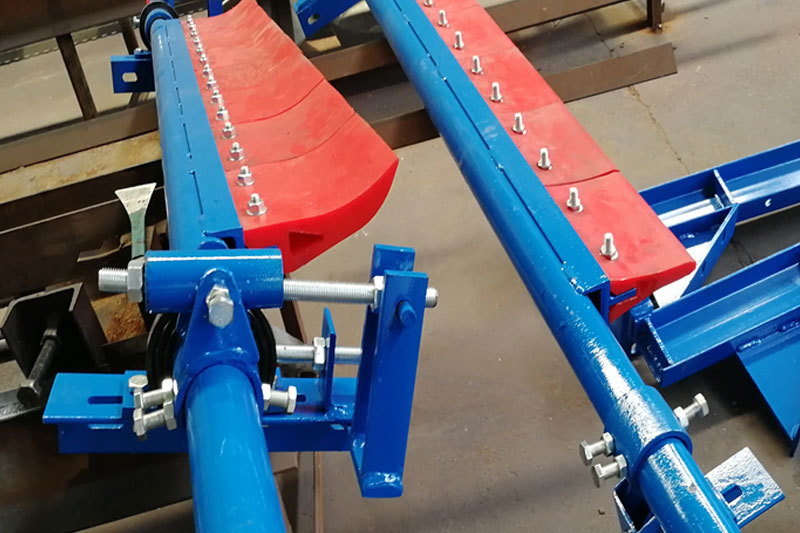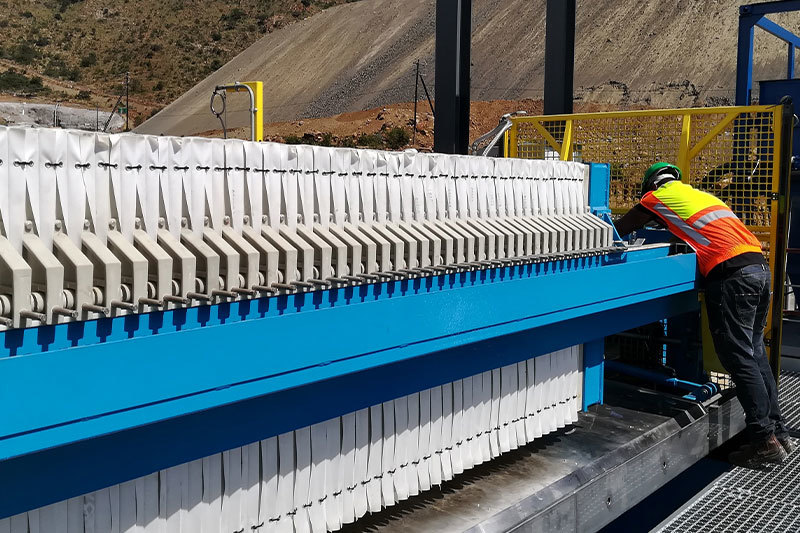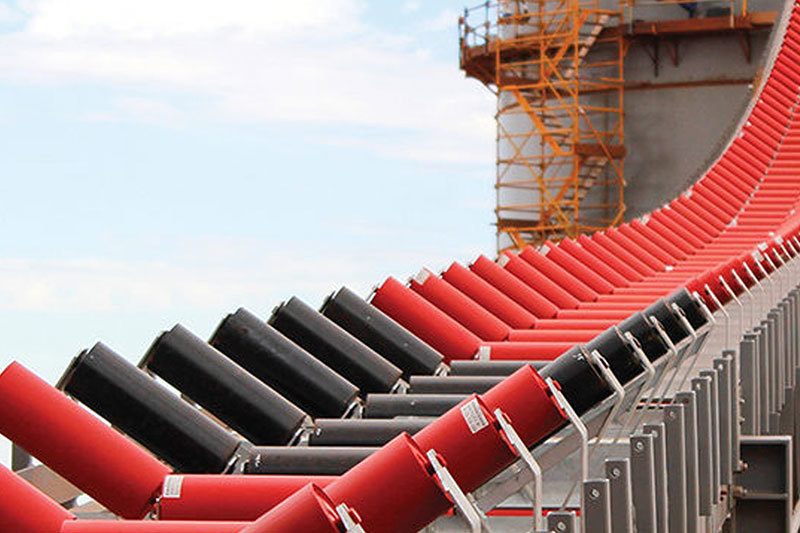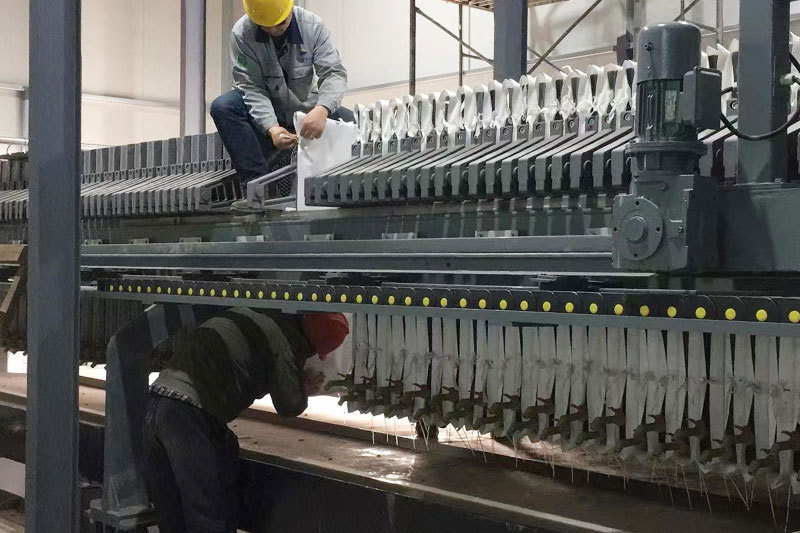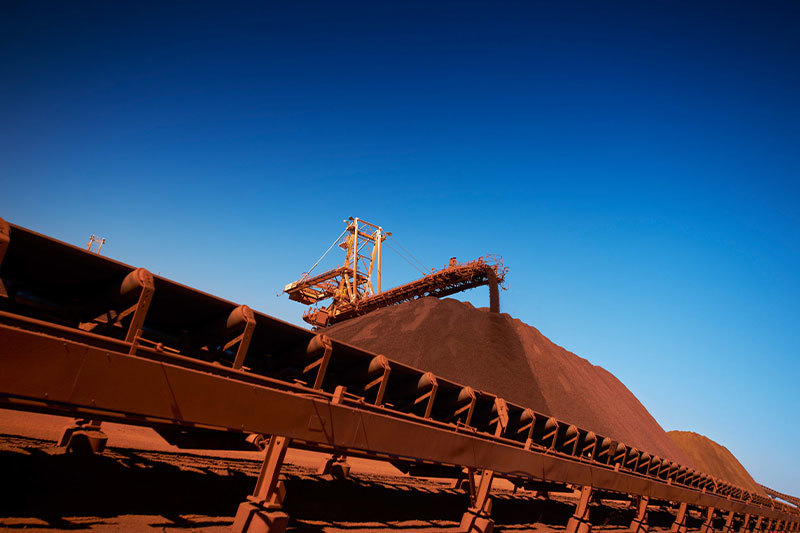Technology Application and Treatment Measures of Mine Transport Belt
Release time:
2023-07-06
Belt conveyor is a machine that continuously transports materials by means of friction drive. It can be used to form a material conveying process from the initial feeding point to the final unloading point on a certain conveying line.

1 Overview
Belt conveyor is a machine that continuously transports materials by means of friction drive. It can be used to form a material conveying process from the initial feeding point to the final unloading point on a certain conveying line. It can not only transport broken materials, but also transport finished items. As a rhythmic assembly line. The main advantages of belt transportation are reliable work, convenient management, stable and noiseless, no damage to the conveyed materials, loading and unloading of the entire length, large conveying capacity, long conveying distance, and low power consumption. Belt transportation is mainly composed of frame, conveyor belt, belt roller, tensioning device, transmission device and unloading cover. The frame is equipped with belt rollers, idlers, etc., which are used to drive and support the conveyor belt. Stainless steel baffles are installed on both sides of the feeding point, and a belt seal is used between the baffle and the conveyor belt to prevent material leakage. the
2. Analysis of the reasons for the deviation of the transport belt
2.1 Analysis of belt deviation caused by installation error
The quality of the installation quality of the belt conveyor has an impact on the deviation of the belt*. The belt deviation caused by the installation error is the most difficult to deal with. The installation error is mainly: (1) The frame The frame is generally a metal structure, and the foundation is mostly made of Concrete fixed. Its processing precision (including the precision of the raw material of the workpiece) cannot make the main body after completion without errors, resulting in errors in the installation foundation. (2) The roller frame and idler roller frame are usually welded structural parts, and the angle of inclination on both sides cannot ensure perfect symmetry. In addition, it is impossible to ensure that the roller racks installed on the frame are absolutely parallel to each other (including the vertical accuracy of the installed roller racks and the longitudinal direction of the conveyor belt). In addition, there are factors such as the positioning accuracy of the idler notch, the straightness of the groove shape of the roller arrangement, the flexible symmetry of the roller rotation, and even the roller diameter, roller shape error, and surface roughness. (3) Accuracy The processing accuracy of the nose, tail, and driving and passive wheels and the position accuracy after installation, including the processing and installation accuracy of the belt tensioning mechanism, etc. the
2.2 Analysis of belt deviation caused by running
(1) The deviation caused by the sticky material of the drum and idler roller After the belt conveyor has been running for a period of time, due to the certain viscosity of the transported material, some dust will stick to the drum and idler roller, making the partial diameter of the drum or idler roller Larger or inflexible rotation of the idler roller will cause uneven tension on both sides of the belt and cause the belt to deviate. (2) Running deviation caused by belt slack After the adjusted belt has been running for a period of time, due to the deformation or aging of the belt stretching, the tension of the belt will decrease, causing the belt to relax and cause the belt to run off. (3) Deviation caused by uneven distribution of mineral materials If the belt does not deviate when it is idling, it will deviate when it is running under load, indicating that the mineral materials are not evenly distributed on both sides of the belt. The uneven distribution of the mineral material is mainly caused by the wrong falling direction and position of the mineral material. If the mineral material is biased to the left, the belt will deviate to the right; and vice versa. (4) Deviation caused by vibration during operation The mechanical vibration of the belt conveyor during operation is inevitable. When the belt runs faster, the greater the vibration, the greater the deviation of the belt. In the belt conveyor, the vibration caused by the radial runout of the idler roller has the greatest influence on the belt deviation.
the
2.3 Analysis of deviation caused by external factors
Thermal expansion and contraction, and weather changes can also cause belt deviation. In addition, the degree of deviation of the conveying material, the working environment, and even the vibration of the equipment or surrounding equipment during operation are all factors that cause the deviation of the conveying belt. Due to the inevitable and unpredictable particularity of these factors, the hidden danger of the deviation of the conveyor belt cannot be completely eradicated, so although the deviation of the conveyor belt can be predicted, it cannot be predicted. That is: the time of deviation cannot be predicted at all, the degree of deviation cannot be predicted, the consequences caused by deviation cannot be predicted, and various losses caused by deviation cannot be predicted, so timely detection and elimination of potential defects in the belt transportation process and hidden dangers are particularly important. the
3. The main factors affecting the strength of belt glued joints
(1) The cohesive strength of the adhesive. It is determined by the characteristics of the adhesive itself. Therefore, when selecting the adhesive, it is necessary to take into account the unity of the adhesive strength required by the adhered material and the cohesive strength of the adhesive.
(2) The adhesion strength between the adhesive and the surface to be adhered. Factors affecting the adhesion strength are: the surface state of the adhered material, if the surface to be adhered has adsorbed gas, moisture, oil, etc. Will seriously affect the bonding quality. Surface roughness. A certain roughness on the surface to be bonded can increase the effective bonding area. The internal stress in the adhesive layer. Such as the stress generated when the volume changes or the temperature changes when the adhesive is cured.
(3) Joint design. Whether the joint design is reasonable or not is an important factor affecting the strength of the joint. The design of the joint must fully consider its stress situation, so as to make the force on the bonding surface as uniform as possible and avoid stress concentration; try to make the glue The layer bears tensile stress or shear stress, and avoids peeling stress, splitting stress or bending stress; reasonably expands the bonding area and improves the bearing capacity of the joint.
4. Belt treatment after deviation
4.1 Adjusting the Tensioning Mechanism Method
When the belt is running, if it deviates to the same side under no-load and heavy-load conditions, it means that the tightness on both sides of the belt is different, and the screw rod or matching screw of the tensioning mechanism should be adjusted according to the law of running tight but not loose. Heavy; if the belt deviates from left to right and has no fixed direction, it means that the belt is loose and the tensioning mechanism should be adjusted. the
4.2 Changing frequency method
Deviation caused by vibration during operation. The mechanical vibration of the belt conveyor during operation is unavoidable. The faster the belt runs, the greater the vibration and the greater the deviation of the belt. In the belt conveyor, the vibration caused by the radial runout of the idler roller has the greatest influence on the belt deviation. Vibration cannot be eliminated, and changing the belt running speed can reduce or change the frequency. the
4.3 Removal of stickies
The deviation caused by the sticky material of the roller and idler: After the belt conveyor has been running for a period of time, due to the certain viscosity of the transported material (such as urea), some dust or dust will stick to the roller and idler, making the pulley or idler The partial diameter of the roller becomes larger or the rotation of the idler roller is not flexible, which causes uneven tension on both sides of the belt and causes the belt to deviate. In this case, clean the dust and dust on the partial diameter of the drum and idler, and replace the inflexible drum and idler. the
4.4 Deviation caused by external factors
For the deviation caused by external factors, inspection and observation should be strengthened, and the deviation phenomenon should be adjusted according to the above adjustment method. the
5. Matters needing attention
In order to ensure firm bonding, reliable performance, improve the quality of belt maintenance, and prolong the service life of the belt, the following points should be done when gluing the belt:
(1) Correctly select the type of glued joint. In order to give full play to the advantages of the glued joint technology and avoid the shortcomings, when selecting or designing the joint form, try to avoid uneven pull-off force, peeling force, and impact force , Bending force, so that the adhesive surface bears shear stress and tensile stress. The belt maintenance of Shaogang Raw Material Factory adopts a straight-mouth stepped joint to glue the belt. This joint has a short service life and a high repair rate, especially in two-way The performance is more obvious on the transmission belt conveyor. Using the oblique stepped joint to glue the belt, the service life of the belt joint can be increased by at least 3 months. The reason is that the miter joint method increases the lap width, and the carrying capacity is higher than that of the straight joint. The method is large; the force distribution of the miter joint is uniform, and the straight joint is easy to cause stress concentration. For example, when the joint passes through the cleaner, the miter joint is in point contact, and the straight joint is in line contact, so the straight joint is easy to be peeled off; During jointing, due to human factors, it is easy to cause damage to the joint (when making a ladder, the ladder interface is scratched, and the next layer of belt core is damaged). Joints can withstand transverse stress and are difficult to crack.
(2) When making joints, the centerlines of the upper and lower joints should be measured accurately. After the glue is completed, the two sides of the upper and lower joints must be on the same straight line; the number of ladder layers must be the same as the number of belt core layers, and the width of each ladder The size must be consistent to ensure that the two sides of the ladder are tightly bonded without leaving gaps.
(3) The prepared glue should be used immediately, and cannot be used after more than 12 hours.
(4) When treating the surface of the glue joint, it should be polished clean and uniform, without residual moisture and other impurities, and without unevenness. A clean, moderately rough, and active surface is conducive to increasing the bonding area and the infiltration of glue, thereby improving the glue. bonding strength.
(5) The glue should be applied evenly, and the glue layer should be thinner. The thicker the glue layer, the lower the shear strength of the joint, and the uniform glue can ensure the thickness of the glue layer. The glue brush should be in one direction, avoid reciprocating, and glue The speed should be fast to prevent air bubbles from being brought into the adhesive layer.
5. Conclusion
To sum up, there are still some problems to be solved in the actual operation of the belt, and I hope to take this as an opportunity to gradually improve and solve them in future practice.
Keywords:
More information



